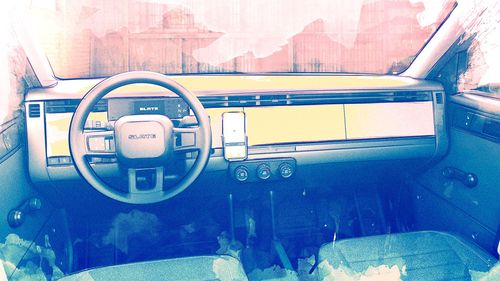The Rise of Touchscreens in Cars
Over the past decade, touchscreens have become ubiquitous in car interiors. What was once a domain of knobs and buttons is now dominated by capacitive touch displays. Some cars even feature screens that span from door to door, creating a periphery-dominating pixel display.

This trend is driven by buyers who want more pixels and more screens, viewing physical buttons as relics of the past. However, a growing number of car shoppers are now resisting this trend, and safety organizations are backing their call for physical controls.
Solutions to Reduce Screen Presence
Several technologies offer hope for reducing the overwhelming presence of screens in cars:
Hidden Screens
Some luxury cars, like the Bentley Continental GT, feature touchscreens that disappear when not in use. The 277-mph Bugatti Tourbillon also has an infotainment display that appears only when needed. Continental’s ‘In2Visible’ technology allows displays to blend into the dashboard and disappear when not in use.

Bring Your Own Device (BYOD)
The Slate, a $27,000 two-passenger truck, embodies the BYOD concept. It lacks a touchscreen and sound system, instead allowing drivers to connect their phone or tablet to the dashboard.

Next-Gen Head-Up Displays
BMW’s upcoming Neue Klasse models will feature a Panoramic iDrive system that spans the entire windshield, providing customizable information. This technology could potentially replace traditional dashboard displays.

Augmented Reality Goggles
Tech companies like Apple and Meta are developing AR goggles that could be used in cars. Audi has partnered with Holoride to create a back-seat solution, while BMW and Mini have shown off mixed-reality solutions for the front seats.
Retinal Projection
The ultimate step in reducing screens could be retinal projection technology, which paints images directly onto the retina. Researchers at the University of Tokyo have created a concept using laser projectors and a robotic arm to track eye movements, potentially allowing for holographic images without headgear.
These technologies offer various solutions to reduce the presence of screens in cars, potentially creating a more distraction-free driving experience.



